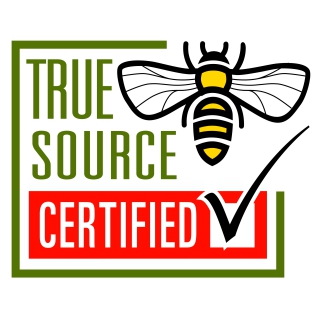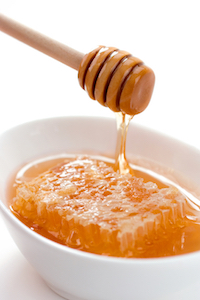
Tracing Honey to Its True Source
07 September 2016A new initiative aims to keep honey sourcing pure and secure.
Courtesy of True Source Honey
When you use honey for a lab kitchen or restaurant, you expect the honey to be pure, natural and from the country of origin listed.
Unfortunately, not all honey is ethically and transparently sourced. In fact, this led to one of the largest food fraud cases in the United States. This summerfederal authorities discovered 60 tons of illegally imported Chinese honey entering the United States in Chicago.
Quality U.S. honey operations are essential not just to produce high-quality honey, but also for the honeybees needed to pollinate fruit, vegetable and seed crops across the United States. When questionable product enters the U.S. supply, consumers and food manufacturers might not receive the quality product they think they are buying.
Most imported and domestic honey is from high-quality, legal sources. But some honey brokers and importers illegally circumvent tariffs and quality controls, selling Chinese honey to U.S. companies and distributors. This honey may be of questionable quality and declared origin. This threatens the nation’s beekeepers (who are already facing challenges with declining bee populations) as well as the entire U.S. honey industry by undercutting fair market prices and damaging honey's reputation.
That’s why True Source Honey, LLC, a nonprofit organization representing beekeepers, honey packers, and honey importers and exporters, developed the True Source Certified™ voluntary system of traceability. Certification requires honey packers and exporters participate in independent third party audits to document their sourcing practices are in full compliance with U.S. and international trade laws. The True Source Honey initiative represents over 30 percent of the honey sold in North America.
This system permits honey to be tracked from the foodservice operation back through the supply chain to the country of origin and the beekeeper who harvested the honey from the beehive.
How can I tell if the honey I buy is True Source Certified?
Look for the True Source Certified logo. If you don’t see it check the True Source Honey website (www.TrueSourceHoney.com) and see if the company making the honey participates in the True Source Certified program. If not, contact the honey company or the distributor to tell them you’re concerned, and to ask them to certify their honey.
Is True Source Certified honey better or safer than other honey?
Unfortunately, some imported honey circumvents trade laws, and – by extension – sometimes quality and safety assurances. Specifically, imported honey originating from China is being transshipped through other countries to circumvent the U.S. duty. When you don't know the honey’s origin, it's difficult to be assured of its quality.
For example, a United States-banned antibiotic has been found in imported honey originating from China. Other honey is found to contain added syrups or sweetener extenders that are not made by bees in the hive. If the origin of honey is misrepresented as it enters this country, the necessary quality and purity tests may not be conducted. True Source Certification ensures that honey is truthfully labeled as to its origin, that there is a transparent record of the honey's sources.
Why should I care about companies that don't abide by U.S. trade laws?
True Source Honey estimates the U.S. loses about $80 million a year in uncollected duties because of illegal honey imports. Furthermore, as honey companies are undercut by these illegal imports, ethical U.S. companies and beekeepers find it harder to compete. Quality U.S. honey operations are essential not just to produce high-quality honey supplies, but also for the honeybees needed to pollinate fruit, vegetable and seed crops. When questionable product enters the U.S. supply, consumers and food manufacturers that count on honey are not always getting the quality product they deserve.
Which companies are involved in the True Source Honey initiative?
It started in 2008 as a voluntary coalition of just five companies seeking to help solve the difficult problem of illegally sourced honey. Today, the group represents about 30 percent of the honey sold in the North America, with additional growth anticipated. Additionally, many beekeepers joined the initiative and the major U.S. beekeeping organizations have voiced their support for the effort as well.
What are the goals of the True Source Honey initiative?
We created True Source Honey Certification to help prevent illegal trade in honey that circumvents U.S. law, which potentially harms the reputation of all honey sold in the United States. True Source Certification protects schools and restaurants that use honey in their food and beverage products as well as consumers who buy table honey or other products that contain honey. True Source Honey suppliers pledge to protect the reputation of honey by ensuring that honey is ethically and legally sourced in a transparent and traceable manner.
What can I do to help U.S. beekeepers and honey companies?
Buy your honey from True Source Certified honey suppliers. That helps U.S. beekeepers and honey companies by preventing illegally sourced honey, which undercuts ethical U.S. companies and beekeepers and potentially damages honey’s golden reputation. The sources for honey should be known, trusted and transparent.
Photos courtesy of True Source Honey.
